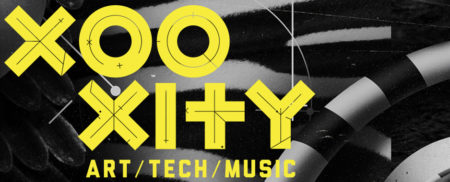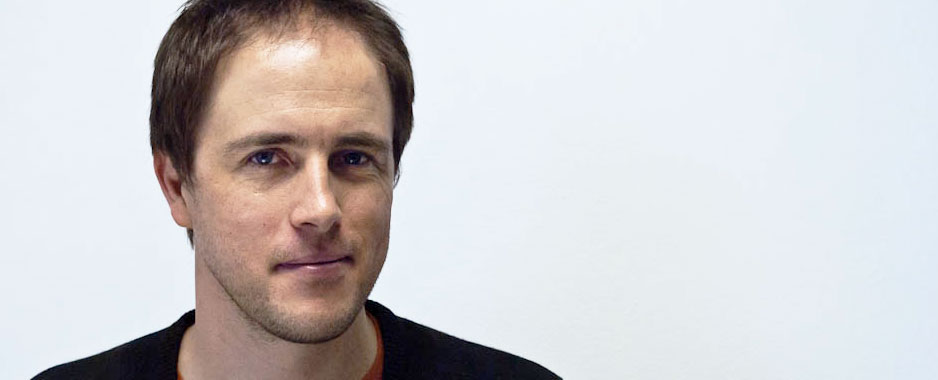
You wouldn’t think Travis Rich was about to disrupt the entire communications industry. A lanky MIT student with sandy brown hair and an easy smile, Rich looks like just another eager college kid. But he has the kind of idea that is as revolutionary as it is simple: communicating with light instead of radio waves.
Speaking at this year’s South by South West (SXSW) Interactive festival, Rich started from a very simple premise. Humans use light (sight) and sound to communicate, but machines have always used radio or electrical waves.
“It’s really difficult for humans to understand how computers communicate because it’s invisible to us,” explains Rich. “Imagine if a race existed that used radio to communicate — they would have no facial expressions and make no sounds, so it would be very difficult for us to communicate with them.”
But the real insight for Rich and his partners was that, although the human eye can only detect a relatively narrow band of light, computers and electronics are much more sensitive. This allows you to use a light source to do both “human” communication and “computer” communication.
As a proof of concept, they built NewsFlash — a smartphone-based app that “scans” a compatible screen (like an iPad or laptop screen) and extracts text, data and tags in a mobile-friendly format. This isn’t some crude optical character recognition trick — the screen is actually transmitting the data to the phone via pulses of light encoded into its display. You can see NewsFlash in action here.
How do they do this? Essentially the the screen flickers in a way that the human eye can’t detect, but which the receiving handset interprets as a data signal. Rich and his colleagues worked out that when you oscillate colours on a screen fast enough, the human eye sees only the average of those oscillations. This gives them huge amounts of effective bandwidth for data transmission.
But the really exciting thing here is that the screen is undisturbed in any way by the scanning. There’s no need to fiddle with Bluetooth or even to push any buttons on the interface. One person could be reading the screen while another scans it and both would get the full benefit of their chosen interaction.
Rich also hints at another, even more compelling application: phone-to-phone photo sharing. He points out that almost everyone shares photos via the Internet because phone-to-phone sharing is such a pain. This technology would make looking at a photo equivalent to sharing a photo. Just point and shoot with your own phone.
He reminds us of the fundamentally “human-friendly” nature of this mode of communication. “If I want privacy I can just put my phone in my pocket, and I know light can’t reach it. I don’t know that with radio waves. I have no idea who my phone could be communicating with right now.”
Naturally Rich’s next move is a start-up company based around this new communication paradigm. When he started thinking about it, he was struck by how few tech start-ups there were in the communications sector. Why is this so? Because radio spectrum is extremely expensive to license, highly regulated and increasingly rare. This only makes his ideas all the more exciting.
Obviously light-based communication has its weaknesses. It is best for local, peer-to-peer communication with ample line of sight. And so his startup — ByteLight — plays to all these strengths. The system uses a network of intelligent, autonomous LED light bulbs (which fit into normal light sockets) to create a kind of indoor “GPS” system. This is accurate to the inch and in 3D.
ByteLight also acts as a kind of local-area network, too — transmitting data between the nodes and the users. Some early ideas about applications include guiding people around museums and art galleries (“the Mona Lisa is 100 metres to your right — here are its vital statistics”) and guiding doctors on their rounds (“Mr Smith in room 25E has very low blood pressure”).
Rich clearly believes these ideas could change the entire industry. He quotes Tim Wu’s book, Master Switch: “[Alexander Graham Bell’s] greatest advantage … was that everyone else was obsessed with trying to improve the telegraph.” You might think it presumptuous for a student to be calling on the spirit of Bell, but I think Rich is touching genius here. Whether or not he goes on the fame and fortune, Rich’s ideas are going to change the world. — Alistair Fairweather, TechCentral
- Image: abdallahh/Flickr
- Subscribe to our free daily newsletter
- Follow us on Twitter or on Google+ or on Facebook
- Visit our sister website, SportsCentral (still in beta)




